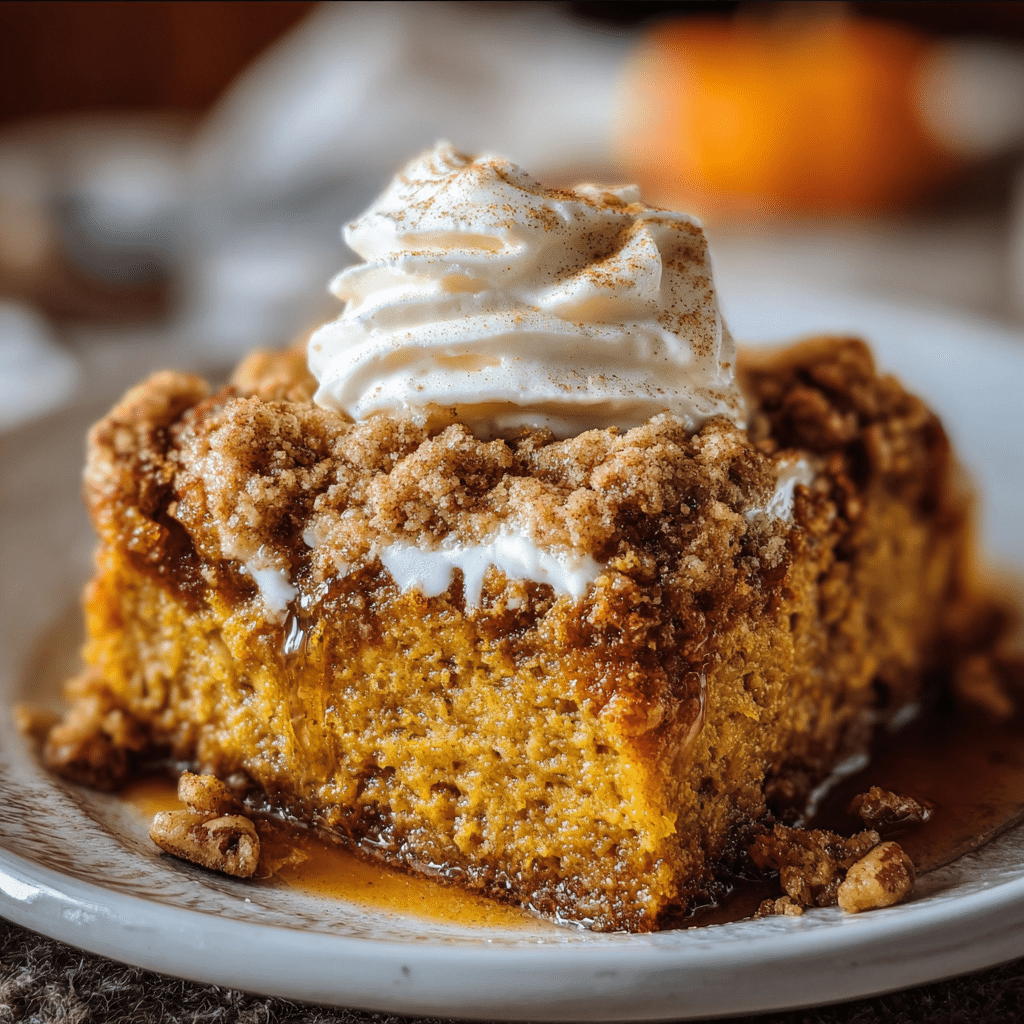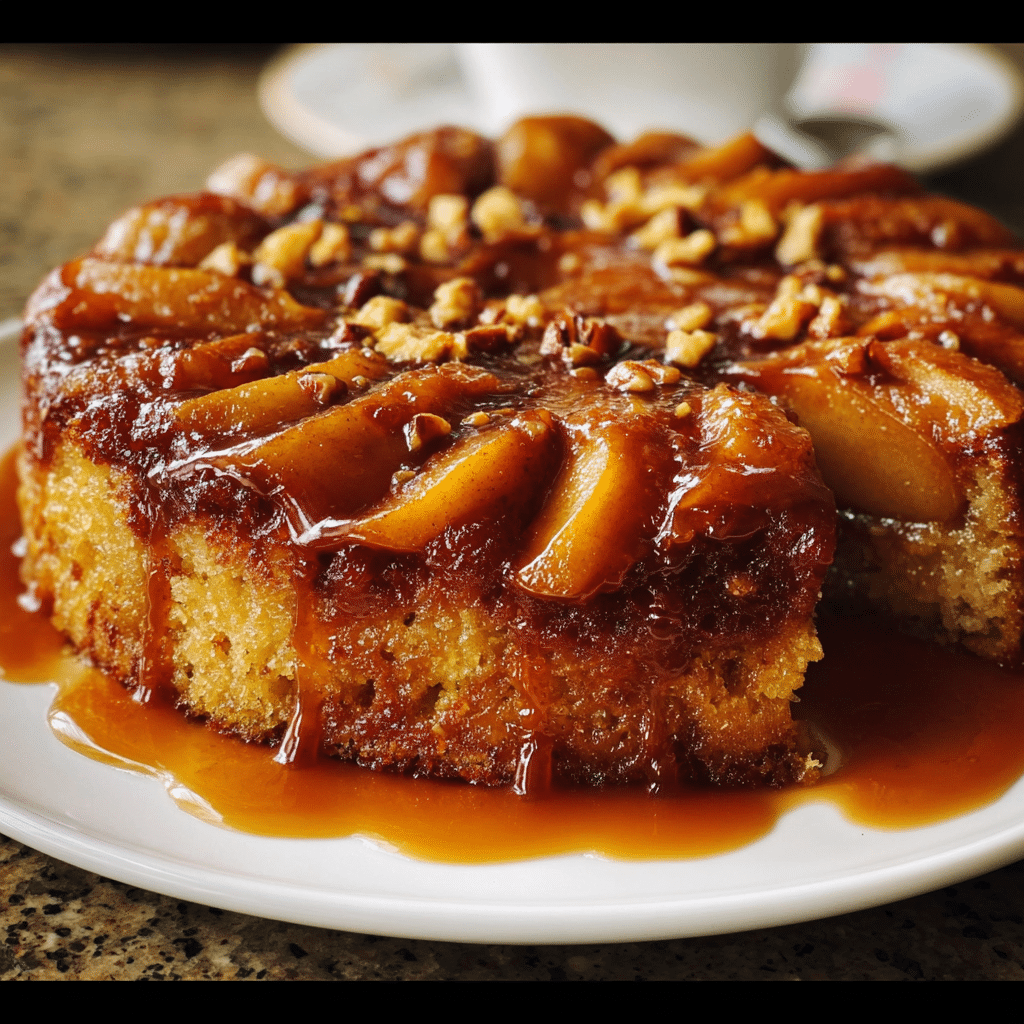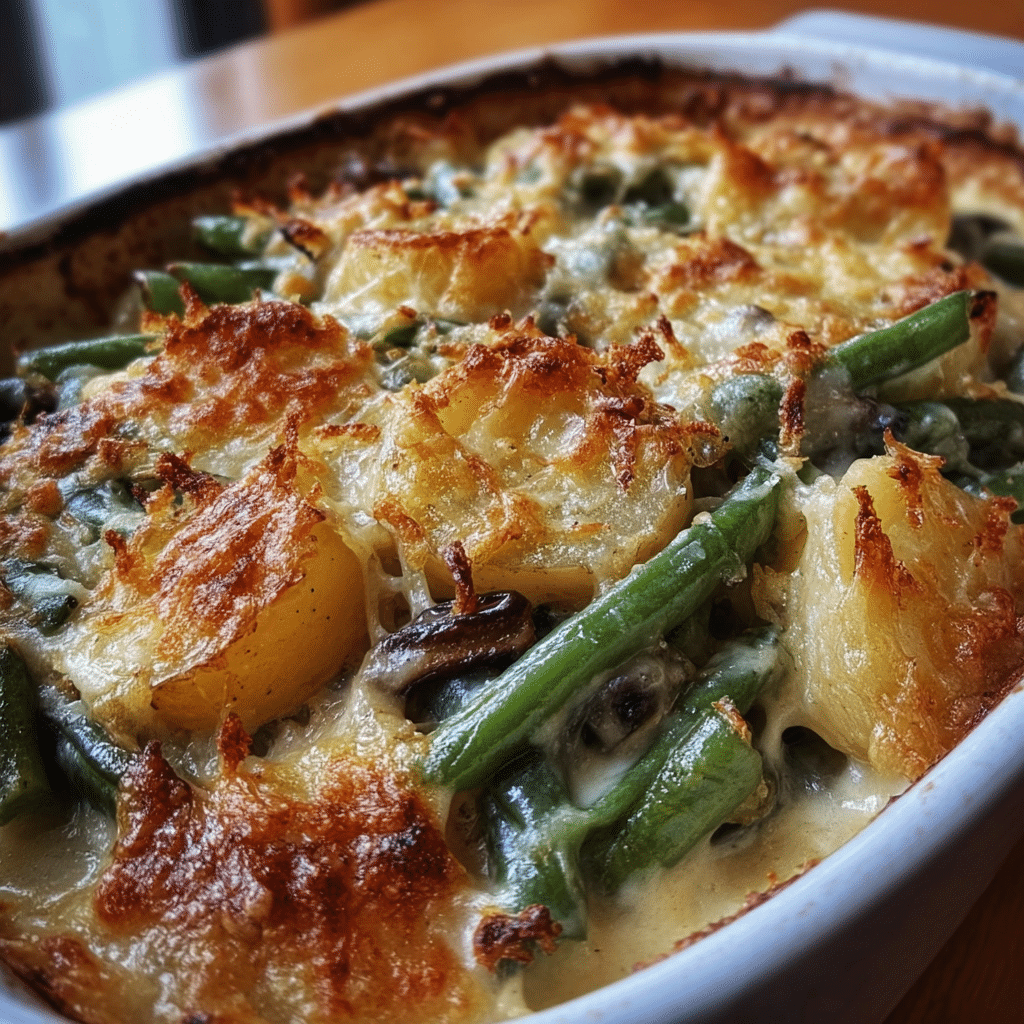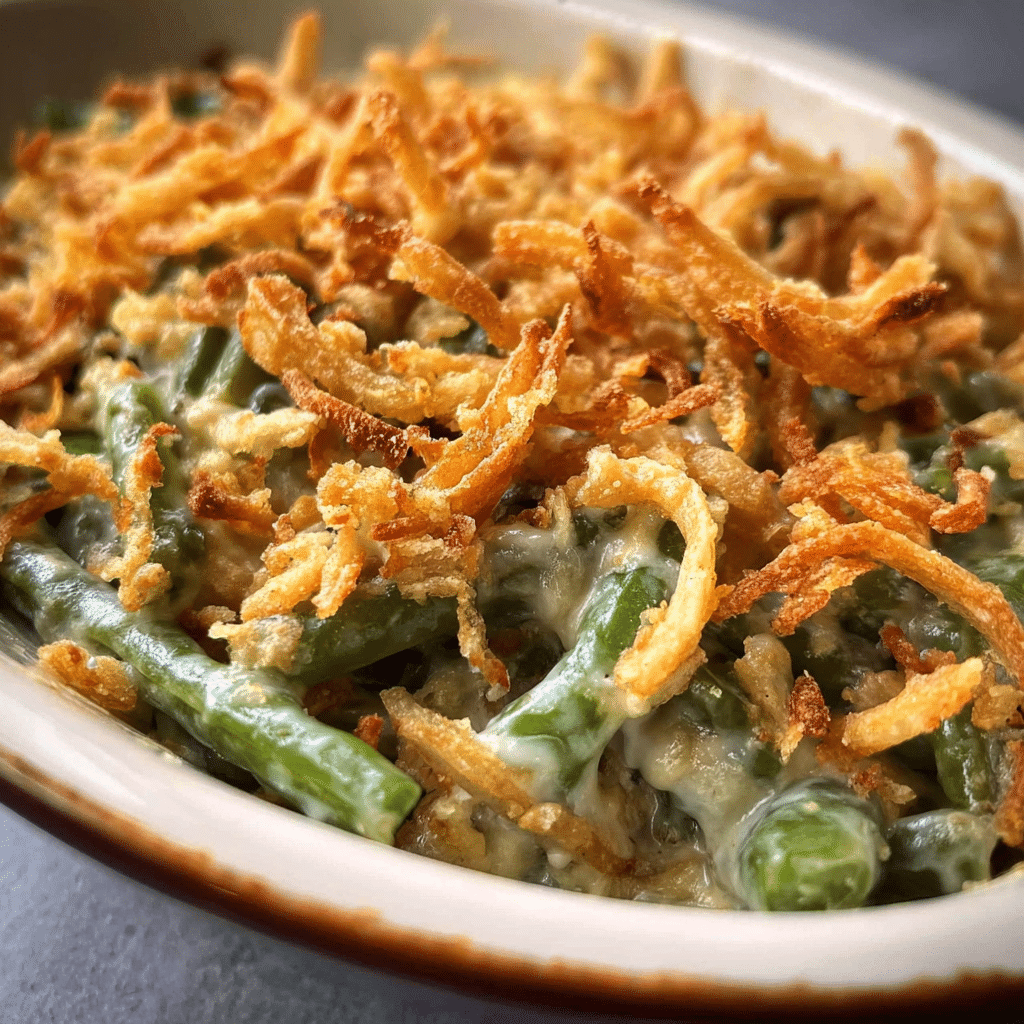Roasted autumn vegetable pot pies have a way of wrapping you in comfort and warmth, much like a favorite blanket on a chilly evening. I still remember the first time I encountered this delightful dish. It was a crisp autumn day, the leaves were dancing down from the trees, and the air was filled with the unmistakable scent of wood smoke and pumpkin spice. My grandmother, a culinary wizard in her own right, was in the kitchen, her apron dusted with flour and her hands busy preparing the evening meal. As she pulled a steaming pot pie from the oven, I was instantly captivated by the golden crust and the warm, fragrant filling. It was a moment that not only satisfied my hunger but also ignited a love affair with cooking that has only grown over the years.
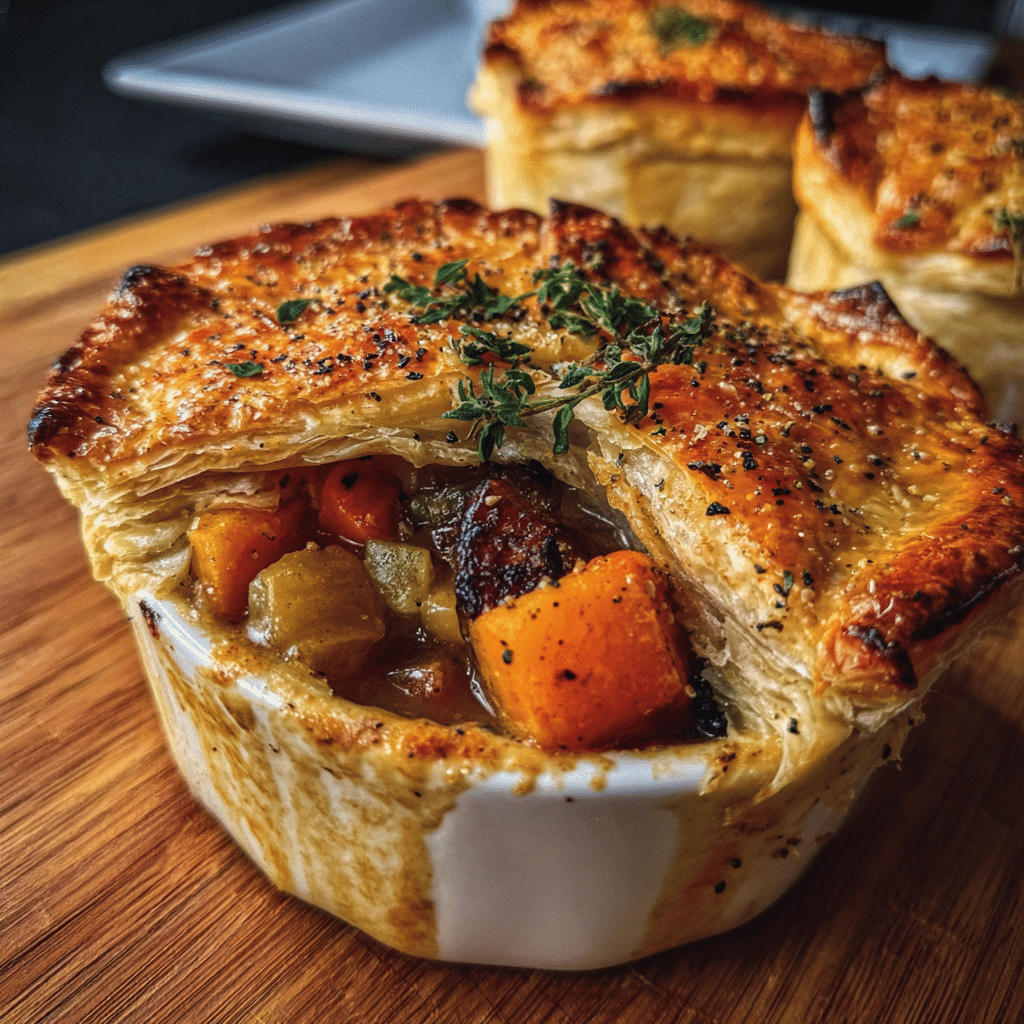
The Story Behind This Recipe
My grandmother’s recipe for roasted autumn vegetable pot pie was unlike any other I had tasted. It was rich with seasonal vegetables like butternut squash, carrots, and parsnips, all roasted to perfection, and enveloped in a flaky, buttery crust. Each bite was a celebration of autumn’s bounty, and I knew I wanted to carry on this tradition. As I grew older and began experimenting in my own kitchen, I embraced the essence of her recipe while adding my own twists. Over the years, I’ve prepared this dish for countless gatherings, always eliciting smiles and warm compliments from friends and family.
What makes roasted autumn vegetable pot pies so special is their ability to blend the simplicity of home cooking with the sophistication of gourmet food. The combination of roasted vegetables creates a depth of flavor that is both comforting and exciting, making it an ideal choice for busy families looking for quick dinner solutions. With just a handful of ingredients and about an hour of your time, you can create a dish that feels like it took all day to prepare. It’s a meal that nourishes the body and soul, especially on those cool autumn evenings when everyone gathers around the table, sharing stories and laughter.
Seasonally, roasted autumn vegetable pot pies are a perfect fit for the months of September through November. This is the time when farmers’ markets are brimming with colorful produce, and the air is filled with the scent of spices and the promise of harvest. For a busy family, this recipe is a savior, allowing you to utilize leftover vegetables, making it both economical and practical. You can throw together a quick filling in less than 30 minutes, pop it into the oven, and enjoy the delightful aromas wafting through your home while you take care of other evening tasks.
As I prepare these pot pies, I often reflect on the emotional connection they hold. There’s something grounding about cooking with seasonal ingredients, knowing that you’re not just feeding your family, but also connecting them to the earth and the changing seasons. It’s a reminder of where our food comes from and the importance of community and family traditions. Each pie I make is filled with a piece of that legacy, and I hope to pass it on to the next generation.
In this guide, you’ll learn how to create your own roasted autumn vegetable pot pie from scratch, including tips on selecting the best vegetables, making the perfect crust, and even customizing the filling to suit your family’s tastes. By the end, you’ll not only have a delicious recipe to share but also a deeper appreciation for the cultural significance and history behind this beloved dish. So, roll up your sleeves, and let’s dive into the wonderful world of roasted autumn vegetable pot pies!
The Rich History and Cultural Significance of roasted autumn vegetable
The rich history and cultural significance of roasted autumn vegetable dishes can be traced back through centuries and across various cultures. The concept of pot pies is ancient, with roots that can be found in medieval Europe, where meat and vegetables were encased in a pastry to preserve them and create a hearty meal. While the specific ingredients have evolved, the idea of combining seasonal vegetables and flavors has remained constant, making it a staple of autumn cuisine.
Origins and History
Pot pies can be found in many cultures around the world, but the modern interpretation of a roasted autumn vegetable pot pie draws heavily from British culinary traditions. In medieval England, pot pies were originally made with meat, often encased in a thick crust called a “coffin” which would be discarded after cooking. It wasn’t until the 19th century that vegetables began to take center stage in many households, particularly with the rise of vegetarianism and a growing interest in seasonal, plant-based eating.
As cultures intermingled and culinary techniques were shared, the filling of pot pies diversified. In the United States, the concept of the pot pie was transformed with the introduction of indigenous ingredients and flavors. As settlers embraced the harvests of the land, ingredients like sweet potatoes, squash, and root vegetables became popular choices, leading to the iconic roasted autumn vegetable pot pie we know today.
Cultural Significance
The significance of a roasted autumn vegetable pot pie extends beyond its delicious flavors; it represents the essence of the harvest season and the importance of community and family gatherings. In many cultures, autumn harvest festivals celebrate the bounty of the year’s crops, and dishes like pot pie are often served as a centerpiece during these festivities. The act of gathering around a table, sharing food, and recounting stories is a tradition that fosters connections, and pot pies often feature prominently in these moments.
Famous chefs and restaurants have embraced the humble pot pie, elevating it to gourmet status while still honoring its rustic roots. Chefs like Thomas Keller and Julia Child have popularized variations that highlight seasonal vegetables while maintaining the comforting essence of the dish. Their interpretations often inspire home cooks to experiment, encouraging a resurgence in the popularity of pot pies, especially during the cooler months.
Nutritional Benefits
From a nutritional standpoint, roasted autumn vegetable pot pies can be incredibly healthy. Packed with seasonal vegetables, they are an excellent source of vitamins, minerals, and antioxidants. Root vegetables like carrots and sweet potatoes are high in beta-carotene, which promotes eye health, while leafy greens like kale or spinach can add a boost of iron and calcium. By making a pot pie from scratch, you can control the ingredients, ensuring that you are using wholesome, nutritious options without the preservatives found in many store-bought versions.
Moreover, incorporating a variety of vegetables not only enhances the flavor but also provides a range of nutrients, making this dish a balanced meal in itself. Whether you are looking to feed a family or host a gathering, roasted autumn vegetable pot pies are an ideal choice that brings both comfort and health to the table.
As we explore the history and cultural significance of this dish, you’ll gain a deeper understanding of why it holds such a cherished place in kitchens around the world, especially during the autumn months. So, as we continue this journey together, let’s uncover the secrets to making the perfect roasted autumn vegetable pot pie!
Essential Ingredients for Perfect roasted autumn vegetable
When it comes to creating the perfect roasted autumn vegetable pot pie, the right ingredients are essential for both flavor and texture. Each component plays a crucial role in delivering that warm, comforting taste that defines autumn cuisine. Below, we dive into the essential ingredients you’ll need, along with tips on selecting the best options, storage methods, and some alternatives for dietary restrictions.
Essential Ingredients
- 1 small butternut squash or half of a large one, peeled, seeded, and diced
- 1 small baking pumpkin or half of a large one, peeled, seeded, and diced
- 2 large carrots, peeled and diced
- ½ pound Brussels sprouts, trimmed and quartered
- 1 small cauliflower or half of a large one, cut into chunks
- 2 tablespoons olive oil
- Kosher salt
- Freshly cracked black pepper
- A pinch of crushed red pepper flakes
- 3 tablespoons unsalted butter
- 1 large yellow onion, diced
- 4 garlic cloves, minced
- 1 pound crimini mushrooms, stemmed and sliced
- 2 dried bay leaves
- 1 teaspoon fresh thyme, chopped
- 1 teaspoon fresh rosemary, chopped
- 3 tablespoons all-purpose flour
- 2 cups vegetable stock
- ½ cup Greek yogurt
- ¾ cup frozen peas, thawed
- 1 egg, whisked with a splash of water
Let’s break down the role and importance of each of these ingredients in our roasted autumn vegetable pot pie.
The butternut squash and baking pumpkin are staple autumn vegetables that provide a natural sweetness and creamy texture. When selecting these, look for firm, unblemished skin, which indicates freshness. The carrots add a delightful crunch and vibrant color. Opt for firm, brightly colored carrots, as they tend to be sweeter. The Brussels sprouts should be firm and compact; avoid any that are yellowing or wilting. The cauliflower should be white with a firm texture, as this ensures a fresh taste.
Moving on to the aromatics, olive oil is essential for roasting the vegetables, helping to caramelize their natural sugars and enhance their flavors. Kosher salt and freshly cracked black pepper are fundamental for seasoning, while a pinch of crushed red pepper flakes adds a touch of heat that complements the sweetness of the vegetables.
The unsalted butter not only contributes richness but also helps to create a silky sauce. The yellow onion and garlic provide depth of flavor, with the onion becoming sweet and caramelized during cooking. The crimini mushrooms add umami, a savory depth that pairs perfectly with the other ingredients.
Herbs like thyme and rosemary are classic autumn flavors, bringing a fresh, aromatic quality to the dish. The flour is crucial for thickening the filling, while the vegetable stock serves as the base of the sauce, infusing the pot pie with moisture and flavor. The Greek yogurt adds creaminess and tang, balancing the flavors beautifully. Frozen peas provide a burst of color and sweetness, while the egg wash is essential for achieving that golden, flaky crust.
Print
Roasted Autumn Vegetable Pot Pies
Ingredients
- 1 small butternut squash or half of a large one peeled, seeded and diced
- 1 small baking pumpkin or half of a large one peeled, seeded and diced
- 2 large carrots peeled and diced
- ½ pound Brussels sprouts trimmed and quartered
- 1 small cauliflower or half of a large one cut into chunks
- 2 tablespoons olive oil
- kosher salt
- freshly cracked black pepper
- pinch of crushed red pepper flakes
- 3 tablespoons unsalted butter
- 1 large yellow onion diced
- 4 garlic cloves minced
- 1 pound crimini mushrooms stemmed and sliced
- 2 dried bay leaves
- 1 teaspoon fresh thyme chopped
- 1 teaspoon fresh rosemary chopped
- 3 tablespoons all-purpose flour
- 2 cups vegetable stock
- ½ cup greek yogurt
- ¾ cup frozen peas thawed
- 1 egg whisked with a splash of water
Black Pepper Rosemary Crust:
- 2 cups all-purpose flour
- ½ teaspoon baking powder
- ½ teaspoon salt
- 1 tablespoon freshly cracked black pepper
- 1 tablespoon fresh rosemary chopped
- ½ cup unsalted butter very cold and diced
- 2 egg yolks
- ¼ cup buttermilk
Instructions
- Preheat oven to 425℉.
- Divide the diced butternut squash, pumpkin, carrots, Brussels sprouts, and cauliflower between two large baking sheets. Drizzle with olive oil and season with salt and black pepper. Give the veggies a toss to evenly coat and roast in the oven for about 20 to 25 minutes or until the veggies are golden brown and crispy. Halfway through roasting, give the veggies a toss. Once roasted, remove from the oven and allow to cool on baking sheets. Lower temperature to 375℉.
- Heat a large heavy-duty pot over medium-high heat. Melt 2 tablespoons of butter and add the chopped onions and garlic. Sauté for about 5 minutes or until the onions begin to soften and get translucent. Season with salt, black pepper, and a pinch of crushed red pepper flakes. Stir and continue to cook until they just caramelize. Add the sliced mushrooms and cook for another 5 minutes, until they have browned. Stir in the chopped thyme, rosemary and dried bay leaves. Cook for another 5 minutes. Move the veggies to one side of the pot and add the remaining 1 tablespoon butter. Melt and then add the flour. Stir and cook for about 30 seconds. Slowly add the vegetable stock, stirring the entire time to evenly combine everything together. Lower the heat and allow to thicken about 10 to 15 minutes. Check for seasoning and adjust accordingly with salt and black pepper. Stir in the roasted vegetables from earlier. Add the greek yogurt and frozen peas, stir together and cook for another minute. Remove from heat and allow to cool slightly.
- In a large bowl, whisk together the flour, baking powder, salt, black pepper and rosemary. Add the cold butter and rub with your fingers (or cut with a pastry cutter) until the butter breaks down and resembles coarse crumbs the size of peas.
- In a small bowl or measuring cup, whisk together the egg yolks and milk. Add it to the flour and stir with a rubber spatula until the dough comes together. Use your hands to shape the dough into a disk. If you find the dough to be too dry, add a splash more buttermilk. Cover with plastic wrap and chill for at least 1 hour. Can be made up to 2 days in advance. Allow to thaw a bit before rolling out.
- On a lightly floured work surface, cut the dough into four even pieces. Working with one piece at a time, roll out the dough into a circle. Trim the edges to create a clean circle. and Repeat with the remaining pieces. Divide the filling evenly among the ramekins or baking dishes. Don’t be afraid to really mound up the filling, it will be thick enough to not spill over. Top each pot pie with the rolled out crusts. Brush the edges of the dishes with egg wash to create a seal between the crust and dish. This will prevent any leakage. Place the pot pies on a baking sheet. Make a few small slits, with a knife, on the top of each crust to allow steam to escape while baking. Brush the pot pies liberally with egg wash and sprinkle with freshly cracked black pepper if you wish. Bake for 25 to 30 minutes or until golden brown and flaky. Remove from oven and allow to cool slightly before serving. Enjoy!
Shopping Tips
When shopping for these ingredients, visiting a local farmers’ market can offer the freshest options, especially for the seasonal vegetables. Look for organic produce when possible, as it typically has richer flavors and is grown without harmful pesticides. For items like crimini mushrooms, choose those that are firm and have a smooth surface. Avoid any that are slimy or have dark spots, as these indicate spoilage.
Seasonality is key when sourcing your roasted autumn vegetable ingredients. Autumn is the peak season for squashes, pumpkins, and root vegetables. Therefore, take advantage of local harvests for the best flavor. If you can’t find a specific item, consider substituting with similar vegetables that are in season. For example, if you can’t find Brussels sprouts, consider using green beans or broccoli.
Substitutions and Alternatives
For those with dietary restrictions, there are several substitutions you can consider. If you are vegan, replace the unsalted butter with vegan butter or coconut oil, and use plant-based yogurt in place of Greek yogurt. For gluten-free diets, substitute the all-purpose flour with a gluten-free flour blend, ensuring the texture remains consistent.
Additionally, if you’re avoiding dairy, the yogurt can be omitted or replaced with a dairy-free alternative. When it comes to the vegetables, feel free to mix and match based on your preferences or what you have on hand. Sweet potatoes, parsnips, or even turnips can seamlessly replace the butternut squash or pumpkin for a unique twist on this classic dish.
Storing fresh vegetables is crucial for maintaining their quality. Keep them in a cool, dry place, and for items like carrots and Brussels sprouts, a perforated plastic bag in the refrigerator can prolong their freshness. If you have leftover ingredients, consider roasting them separately and using them in salads or grain bowls, ensuring nothing goes to waste.
With all these ingredients on hand, you’re well-prepared to create a delicious roasted autumn vegetable pot pie that celebrates the flavors of the season. Remember, the key is not just in the ingredients themselves, but in how they come together to create a symphony of flavors that warms both the heart and the home.
Detailed Step-by-Step roasted autumn vegetable Cooking Instructions
Creating a roasted autumn vegetable pot pie is a delightful culinary journey, from the preparation of the ingredients to the final assembly of the dish. This process is not just about following a recipe; it’s about engaging with the food, experiencing the aromas, and enjoying the transformation of simple ingredients into a comforting masterpiece. Below, we’ll take you through each step in detail, ensuring that your pot pie turns out perfectly every time.
Preparation Steps
- Preheat the Oven: Begin by preheating your oven to 400°F (200°C). A hot oven is essential for roasting the vegetables properly, allowing them to caramelize and develop rich flavors.
- Prepare the Vegetables: Start with the butternut squash and pumpkin. Carefully peel, seed, and dice them into uniform pieces, about 1-inch cubes. This ensures even cooking. Then, do the same with the carrots, Brussels sprouts, and cauliflower. Uniformity is key to achieving the ideal texture!
- Chop the Aromatics: Dice the yellow onion and mince the garlic cloves. Having these prepped will streamline the cooking process and allow for a smoother transition to sautéing.
- Measure Out the Seasonings: To avoid scrambling during cooking, measure out the olive oil, salt, pepper, crushed red pepper flakes, thyme, and rosemary. This mise en place technique will make cooking more enjoyable and efficient.
Cooking Process
- Roast the Vegetables: In a large mixing bowl, toss the prepared butternut squash, pumpkin, carrots, Brussels sprouts, and cauliflower with 2 tablespoons of olive oil, kosher salt, freshly cracked black pepper, and a pinch of crushed red pepper flakes. Spread them evenly on a baking sheet lined with parchment paper. Roast in the preheated oven for about 25-30 minutes, or until they’re tender and slightly caramelized, stirring halfway through. The aroma of roasting vegetables is simply intoxicating!
- Sauté the Aromatics: In a large skillet over medium heat, add 3 tablespoons of unsalted butter. Once melted, add the diced onion and sauté until translucent, about 5 minutes. Then, add the minced garlic and sliced crimini mushrooms, cooking until the mushrooms are browned and have released their moisture, about 7-10 minutes. This step builds a robust flavor base for your filling.
- Add the Herbs and Flour: Remove the skillet from heat and stir in the chopped thyme and rosemary. Sprinkle the flour over the sautéed mixture and stir until well combined. This will help thicken the filling later. Be careful not to let the flour brown; we want to keep that pure, comforting flavor.
- Incorporate the Vegetable Stock: Gradually pour in the vegetable stock while stirring continuously to prevent lumps. Add the roasted vegetables and bay leaves, stirring to combine. Allow the mixture to simmer for about 5 minutes until thickened. The colors will be vibrant, and the smells will make your mouth water!
- Stir in the Yogurt and Peas: Remove the bay leaves and stir in the Greek yogurt until fully incorporated. This will add creaminess to the filling. Next, fold in the thawed peas for a pop of sweetness and color.
Final Assembly
- Prepare the Pie Crust: While your filling is still warm, roll out your pie crust on a floured surface. If using a store-bought crust, ensure it’s thawed and ready for use. The key to a flaky crust is not overworking it!
- Fill the Pie: Pour the warm vegetable filling into a pie dish, spreading it evenly. Carefully lay the pie crust over the top, pressing down the edges to seal. You can cut slits in the top crust for ventilation, which allows steam to escape during baking.
- Brush with Egg Wash: In a small bowl, whisk the egg with a splash of water. Brush this mixture over the crust for a beautiful golden finish. This step is where the magic happens—watch as your pie becomes golden and enticing in the oven!
- Bake the Pie: Place the pie in the 400°F (200°C) oven and bake for 25-30 minutes or until the crust is golden brown and the filling is bubbling. You may want to place a baking sheet underneath the pie to catch any drips.
- Cool and Serve: Once baked, remove the pie from the oven and let it cool for about 10 minutes before slicing. This resting time allows the filling to set slightly, making it easier to serve. Enjoy your roasted autumn vegetable pot pie with a side salad or crusty bread for a complete meal.
Throughout this process, keep in mind the importance of timing and multitasking. While your vegetables roast, you can prepare the filling and pie crust, maximizing your efficiency in the kitchen. The secret to a successful pot pie lies in the balance of flavors and the care you take in each step. Enjoy the process, and soon you’ll have a dish that not only tastes fantastic but also warms the heart!
Professional Tips and Techniques for roasted autumn vegetable
When it comes to creating a comforting dish like roasted autumn vegetable pot pies, understanding the professional tips and techniques can elevate your culinary experience from good to unforgettable. The warmth of the roasted vegetables encased in a flaky crust can evoke memories of family gatherings and cozy evenings, making it an ideal dish for the fall season. Here, I’ll share some insider secrets, troubleshooting tips, and equipment recommendations to ensure your roasted autumn vegetable pot pies turn out perfectly every time.
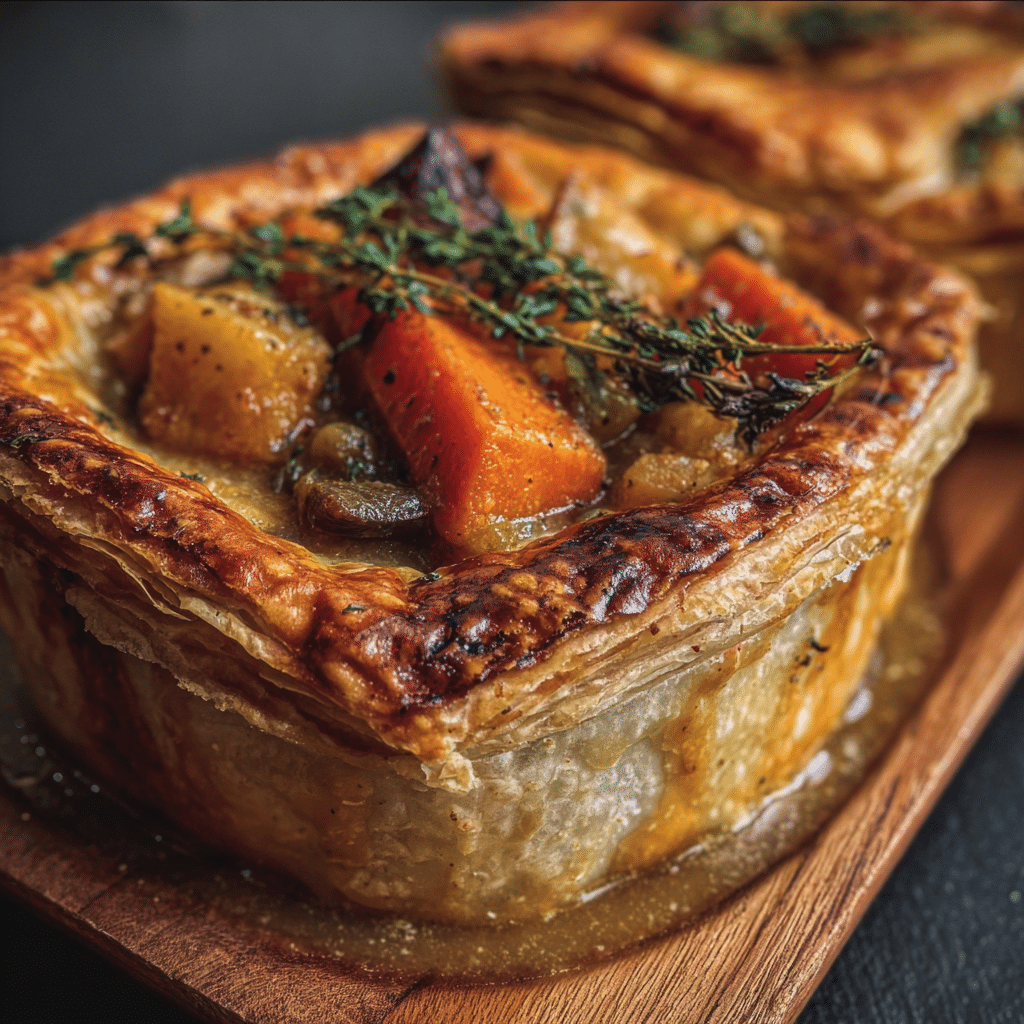
Professional Techniques
Let’s start with the foundation of any great pot pie: the filling. For roasted autumn vegetable pot pies, the key is to choose vegetables that not only complement each other but also roast beautifully. Think about incorporating root vegetables like carrots, parsnips, and sweet potatoes, along with seasonal favorites like butternut squash and Brussels sprouts. The caramelization that occurs during roasting enhances the natural sweetness of these vegetables, creating a depth of flavor that’s irresistible.
Begin by cutting your vegetables into uniform sizes. This ensures even cooking and helps prevent some pieces from becoming mushy while others are still undercooked. A good rule of thumb is to aim for 1-inch cubes. Don’t forget to toss them in olive oil, salt, and pepper before roasting. This simple step can make a world of difference in flavor.
Roasting should be done at a high temperature, around 425°F (220°C). This allows the vegetables to caramelize properly. I recommend using a convection oven if you have one, as it circulates hot air and promotes even browning. Keep a close eye on your veggies; they should be tender and golden-brown, which typically takes about 25-30 minutes.
Troubleshooting Guide
Even with the best intentions, things can go awry in the kitchen. Here are a few common problems you might encounter while preparing your roasted autumn vegetable pot pies, along with solutions to help you troubleshoot:
- Problem: The filling is too watery.
- Solution: This can happen if the vegetables release too much moisture during roasting. To combat this, try roasting the vegetables longer to allow excess liquid to evaporate. Alternatively, you can use a thickener like cornstarch or flour in your sauce.
- Problem: The crust is soggy.
- Solution: A soggy crust often results from adding too much liquid to the filling or not pre-baking the crust. To prevent this, consider blind-baking the crust for 10-15 minutes before adding the filling. This will create a barrier that helps keep the crust crisp.
- Problem: The vegetables are undercooked.
- Solution: If your veggies aren’t tender, they may need more time in the oven. Always taste them before assembling your pie. If you find they’re still firm, give them a few more minutes in the oven.
Presentation Tips
When it comes to serving your roasted autumn vegetable pot pies, presentation can take the dish to the next level. Here are some suggestions to impress your guests:
- Serving in Individual Dishes: Consider serving the pot pies in individual ramekins or mini cast-iron skillets. This not only makes for an attractive presentation but also allows each guest to have their own serving.
- Garnishing: A sprinkle of fresh herbs like thyme or parsley can add a pop of color and freshness. Additionally, a drizzle of balsamic reduction on the plate can enhance the visual appeal and flavor profile.
- Crust Designs: Get creative with your pie crust! Use cookie cutters to create shapes from leftover dough and place them on top of the filling before baking. This adds a whimsical touch, especially for fall-themed gatherings.
Pairing your pot pie with the right beverage can enhance the dining experience. A crisp white wine like Chardonnay or a light red such as Pinot Noir complements the earthy flavors of the roasted autumn vegetables beautifully. Alternatively, a warm apple cider can add a cozy touch, making it the perfect accompaniment for a chilly evening.
In terms of meal prep, you can roast your vegetables a day ahead and store them in the fridge until you’re ready to assemble your pot pies. This makes the process quicker, especially for busy weeknights or when hosting guests. You can also scale the recipe by doubling the ingredients if you’re feeding a crowd or halving it for a smaller gathering.
In conclusion, with these professional tips and techniques, your roasted autumn vegetable pot pies will not only be delicious but also a testament to your culinary skills. Embrace the process, enjoy the journey, and let the flavors of autumn shine through in every bite.
Creative Variations and Adaptations of roasted autumn vegetable
One of the joys of cooking is the ability to adapt recipes to fit your personal tastes and dietary needs. When it comes to roasted autumn vegetable pot pies, the possibilities for creative variations are endless. This dish is not only versatile in its ingredients but also allows for international influences and dietary modifications. Let’s explore some innovative adaptations that will inspire you to put your twist on this comforting classic.
Seasonal Variations
While the traditional roasted autumn vegetable pot pie features ingredients like sweet potatoes and Brussels sprouts, don’t hesitate to experiment with seasonal swaps. For example, in the winter months, root vegetables such as rutabaga and turnips can add a delightful earthiness. During the spring, consider incorporating asparagus and peas for a fresh, vibrant filling.
Another seasonal idea is to use heirloom tomatoes and zucchini in the summer, combined with a lighter broth instead of a creamy sauce. This can create a refreshing pot pie that celebrates the bounty of the garden. The beauty of roasted autumn vegetables is their ability to adapt to whatever is in season, ensuring that your pot pies are always fresh and flavorful.
Dietary Adaptations
In today’s world, accommodating dietary restrictions is essential for many home cooks. Thankfully, roasted autumn vegetable pot pies can be easily modified to suit various diets:
- Vegan: Swap out the cream-based sauce for a rich vegetable broth thickened with cornstarch or flour. Use a plant-based butter substitute for the crust, and ensure that your pastry is egg-free.
- Gluten-Free: Use gluten-free flour for your crust, or consider a phyllo pastry for a light, flaky alternative. You can also make a crust from ground nuts or oats, which can lend a wonderful texture to the pie.
- Keto: For a low-carb option, you can make a crust using almond flour or cauliflower. You can also increase the cheese content in your filling to add richness without the carbs.
Creative Twists
Ready to take your pot pies on an international adventure? Consider adding spices and flavors from around the globe. A dash of curry powder can give your filling an Indian flair, while adding chimichurri sauce can infuse it with a Latin twist. If you’re feeling adventurous, try an Asian-inspired pot pie with sautéed ginger and garlic, along with a splash of soy sauce to enhance the umami flavors.
Another fun twist is to incorporate different cooking methods. If you’re short on time, a slow cooker can work wonders for creating a hearty filling. Simply toss your chopped vegetables, broth, and seasonings into the slow cooker and let it do its magic while you go about your day. You can then top it with a pre-made crust when you’re ready to bake.
Finally, let’s talk about transforming leftovers! If you find yourself with extra filling, consider making a roasted autumn vegetable shepherd’s pie by topping it with mashed potatoes instead of a pastry crust. Alternatively, you could use the filling to create a savory baked pasta dish, layering it with cheese and pasta for a new twist on comfort food.
In summary, the versatility of roasted autumn vegetable pot pies allows for endless creativity in the kitchen. By experimenting with seasonal ingredients, accommodating dietary needs, and incorporating international flavors, you can create a dish that is not only comforting but also uniquely yours. So gather your ingredients and get ready to embrace the delightful variations of this beloved autumn classic!
Storage, Reheating, and Meal Prep for roasted autumn vegetable
When it comes to preparing a delightful dish like roasted autumn vegetable pot pies, understanding how to properly store, reheat, and meal prep is essential for maintaining their deliciousness and quality. I remember the first time I made these pot pies; the kitchen was filled with the comforting aroma of roasted vegetables, and I found myself thinking of ways to ensure that I could enjoy the leftovers for days to come. This section will guide you through the best practices for storing your roasted autumn vegetable pot pies, whether you’re looking to keep them fresh for a few days or freeze them for later use.
Short-term Storage
After preparing your pot pies, you may want to enjoy them right away. However, if you have leftovers, it’s important to store them correctly in the refrigerator. Start by allowing the pot pies to cool completely at room temperature. This will prevent condensation from forming inside the storage container, which can make the crust soggy. Once cooled, transfer the pot pies into airtight containers. I prefer glass containers with tight-fitting lids, as they not only keep the freshness locked in but also allow me to see the contents. Alternatively, you can cover the pot pies with plastic wrap, ensuring it touches the surface to prevent air from getting in.
In the fridge, these roasted autumn vegetable pot pies can last for about 3 to 4 days. If you’re like me, you might be tempted to finish off leftovers within a couple of days, but it’s always good to have a few days’ grace period in case life gets busy. Remember to label your containers with the date they were made to keep track of their freshness.
Freezing and Long-term Storage
If you want to store your roasted autumn vegetable pot pies for a longer period, freezing is a fantastic option. Freezing preserves the flavor and texture of the pies, allowing you to enjoy them weeks or even months later. To freeze, I recommend following a few simple steps. First, let the pot pies cool completely, just as you would for short-term storage. Once cool, wrap each pie tightly in plastic wrap. This is key to preventing freezer burn, which can ruin the texture of your beloved pot pie crust.
For added protection, place the wrapped pot pies in a freezer-safe bag or container. Be sure to label them with the date and type of dish. Roasted autumn vegetable pot pies can be frozen for up to 3 months. After that, they may lose some of their quality, although they will still be safe to eat.
Reheating Best Practices
When it’s time to enjoy your frozen or refrigerated roasted autumn vegetable pot pies, reheating them correctly is crucial for preserving their delightful taste and texture. For refrigerated pot pies, the oven is your best bet. Preheat your oven to 350°F (175°C), then place the pot pie on a baking sheet to catch any drips. Cover the pie loosely with aluminum foil to prevent the crust from browning too much while the filling heats through. Bake for about 20-25 minutes, or until heated thoroughly. The internal temperature should reach at least 165°F (74°C) for safe consumption.
If you’re reheating a frozen pot pie, you can either thaw it in the refrigerator overnight or bake it straight from the freezer. If baking from frozen, increase your baking time to about 45-60 minutes, keeping it covered with foil for the first half of the cooking time. After that, remove the foil to allow the crust to crisp up.
Meal prep is another great way to make weeknight dinners easier. I often make a large batch of roasted autumn vegetable pot pies on the weekend and freeze several for busy nights. This way, I have a comforting meal ready to go when my schedule gets hectic. Just remember to follow the freezing and reheating guidelines to enjoy them at their best!
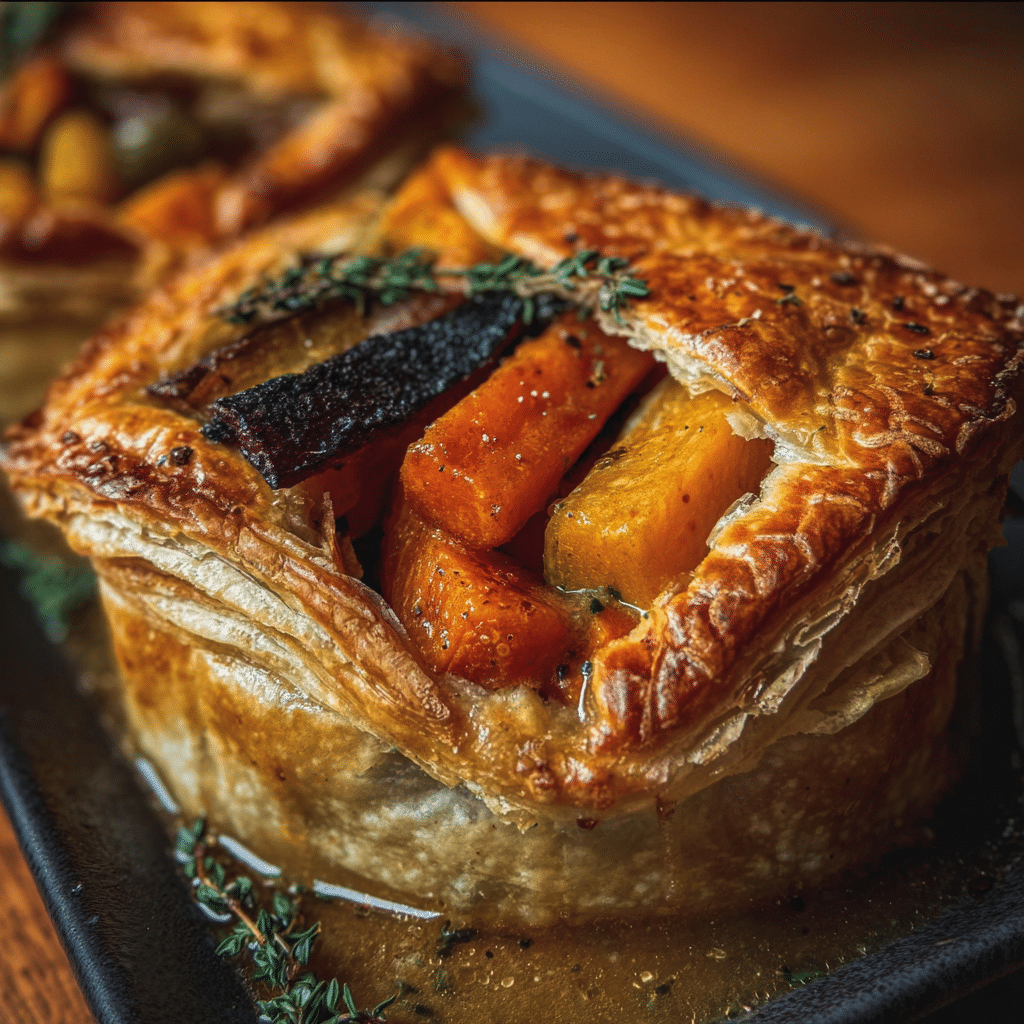
Food safety is always a priority when storing any food, including your beloved pot pies. Be sure to cool them properly before refrigerating or freezing. If you notice any off smells or changes in texture after storage, it’s better to err on the side of caution and discard the food.
Lastly, consider portioning your pot pies if you know you’ll be enjoying them alone or in smaller groups. You can use ramekins or small pie dishes to create individual servings that are perfect for quick reheating. This not only makes it easier to manage your portions, but it also gives a delightful presentation when serving.
In conclusion, mastering the art of storage, reheating, and meal prep for roasted autumn vegetable pot pies elevates your culinary experience. With these tips, you can ensure that every bite remains as delicious as the first, whether enjoyed fresh out of the oven or reheated after a busy day. So go ahead and make a double batch; with the right storage techniques, you’ll always have a comforting meal waiting for you!
Nutritional Benefits and Health Information
When we talk about roasted autumn vegetable pot pies, we aren’t just indulging in a warm, comforting dish; we’re also nourishing our bodies with a variety of healthful ingredients. As someone who loves to explore the nutritional aspects of food, I find it fascinating to look into the benefits of the key ingredients that make up this delicious pot pie. In this section, we’ll dive into the nutritional breakdown, health benefits, and dietary considerations surrounding roasted autumn vegetable pot pies, ensuring you feel good about what you’re eating.
Nutritional Profile
Roasted autumn vegetable pot pies are a medley of flavors, textures, and nutrients. Typically, the filling includes seasonal vegetables such as carrots, potatoes, sweet potatoes, butternut squash, and perhaps some leafy greens like kale or spinach. These vegetables are not only delicious but also packed with essential vitamins and minerals. For instance, a standard serving of roasted autumn vegetable pot pie (about 1 cup) can contain:
- Calories: Approximately 300-400 (depending on crust and filling variations)
- Carbohydrates: 40-50 grams
- Protein: 6-10 grams
- Fat: 12-20 grams
The exact nutritional content will vary based on the specific vegetables used and the type of crust (store-bought versus homemade) that you choose. However, what remains consistent is the abundance of micronutrients these ingredients provide.
Health Benefits
One of the most significant health benefits of roasted autumn vegetables is their rich content of vitamins and minerals. For example, sweet potatoes are an excellent source of vitamin A, which is crucial for maintaining healthy vision and a robust immune system. Carrots are known for their beta-carotene content, which can support skin health and overall well-being. Additionally, leafy greens like kale are packed with antioxidants and vitamins K and C, contributing to heart health and reducing inflammation.
Moreover, the combination of fiber from the vegetables and whole grains (if you opt for a whole-grain crust) can help support digestive health and keep you feeling full for longer. This is particularly important during the colder months when hearty meals can sometimes lead to overeating. Eating a balanced dish like roasted autumn vegetable pot pies can help you satisfy your cravings without compromising your health.
Dietary Considerations
Dietary considerations play a significant role in meal planning, especially for those with allergies or specific dietary restrictions. Roasted autumn vegetable pot pies can easily be adapted to fit various diets. For example, if you are gluten-sensitive, you can use a gluten-free crust made from almond flour or a cauliflower crust. Those following a vegan diet can replace the butter and cream with plant-based alternatives, such as olive oil or coconut cream, and ensure the pie crust is vegan-friendly.
In terms of allergen information, it’s important to be mindful of common allergens that may be present in your ingredients. Some store-bought crusts may contain dairy or eggs, so checking labels is crucial if you or your guests have allergies. If you’re cooking for a crowd, it’s also a good idea to ask about dietary preferences to ensure everyone can enjoy your delicious roasted autumn vegetable pot pies.
When comparing roasted autumn vegetable pot pies to similar dishes, such as traditional chicken pot pies or beef pot pies, the vegetable version offers a lighter, nutrient-dense alternative. While meat-based pot pies can be rich in protein, they often come with higher levels of saturated fat and calories. In contrast, by packing your pot pie with a variety of vegetables, you can create a meal that is both hearty and health-conscious.
For those looking to modify the recipe for even more health benefits, consider adding legumes such as lentils or chickpeas to the filling. These ingredients boost protein content while adding more fiber, making the dish even more satisfying.
In conclusion, roasted autumn vegetable pot pies represent not only a delicious comfort food but also a nutritional powerhouse packed with health benefits. By understanding the nutritional profile and making small adjustments based on dietary preferences, you can enjoy this delightful dish while feeling good about your choices. So next time you dig into a warm pot pie, remember that you are not just indulging in a treat; you are nourishing your body with wholesome ingredients that celebrate the best of the season!
Frequently Asked Questions About Roasted Autumn Vegetable
What are the best vegetables to use for roasted autumn vegetable pot pies?
When selecting vegetables for roasted autumn vegetable pot pies, consider seasonal favorites such as butternut squash, sweet potatoes, carrots, and Brussels sprouts. These vegetables not only provide a range of flavors but also complement each other well when roasted. For added texture, include vegetables like parsnips or turnips. Be sure to cut the vegetables into uniform pieces to ensure even roasting, and toss them in olive oil with herbs like thyme or rosemary for an aromatic touch.
How do I ensure my pot pie crust is flaky and delicious?
To achieve a flaky and delicious pot pie crust, start by using cold butter or shortening and work it into the flour until it resembles coarse crumbs. This method creates small pockets of fat that will puff up during baking, resulting in a tender crust. Chill the dough for at least 30 minutes before rolling it out to relax the gluten, which helps prevent toughness. For added flavor, consider incorporating herbs or spices into the crust dough, and always brush the top with an egg wash before baking for a beautiful golden finish.
Can I make the roasted autumn vegetable filling ahead of time?
Yes, you can definitely make the roasted autumn vegetable filling ahead of time, which can save you time on the day of assembly. Roast the vegetables, allow them to cool, and then store them in an airtight container in the refrigerator for up to three days. When you’re ready to make the pot pies, simply reheat the filling slightly before placing it in the crust. This ensures that your pie will bake evenly and the flavors will be vibrant when served.
What spices and seasonings work well with autumn vegetables in pot pies?
For roasted autumn vegetable pot pies, spices such as cinnamon, nutmeg, and allspice can enhance the natural sweetness of the vegetables. Additionally, savory herbs like sage, thyme, and rosemary add depth and complexity to the filling. A sprinkle of garlic powder or onion powder can also enhance the flavor profile. Don’t hesitate to experiment with a dash of cayenne or smoked paprika for a subtle kick; just be mindful of balancing the spices to avoid overpowering the dish.
How do I know when my pot pie is done baking?
Your pot pie is done baking when the crust is golden brown and the filling is bubbling. Typically, it will take about 30-40 minutes in a preheated oven at 375°F (190°C), but keep an eye on it as oven temperatures can vary. If the edges of the crust start to brown too quickly, cover them with aluminum foil to prevent burning while allowing the center to finish cooking. For the best texture, let the pot pie cool for about 10-15 minutes before serving, as this allows the filling to set and makes it easier to slice.
Conclusion: Mastering the Perfect roasted autumn vegetable
Creating the perfect roasted autumn vegetable is more than just following a recipe—it’s about understanding the techniques, ingredients, and cultural significance behind this beloved dish. Throughout this comprehensive guide, we’ve explored everything from the historical origins to modern variations, ensuring you have all the knowledge needed to make this recipe your own.
Whether you’re a beginner cook or an experienced chef, the techniques and tips we’ve shared will help you create a roasted autumn vegetable that’s not only delicious but also meaningful. Remember that cooking is a journey of discovery, and each time you make this dish, you’ll learn something new.
We encourage you to experiment with the variations we’ve discussed, adapt the recipe to your dietary needs, and most importantly, share it with the people you love. Food has the incredible power to bring people together, and Roasted Autumn Vegetable Pot Pies is the perfect dish to create lasting memories around your dinner table.

